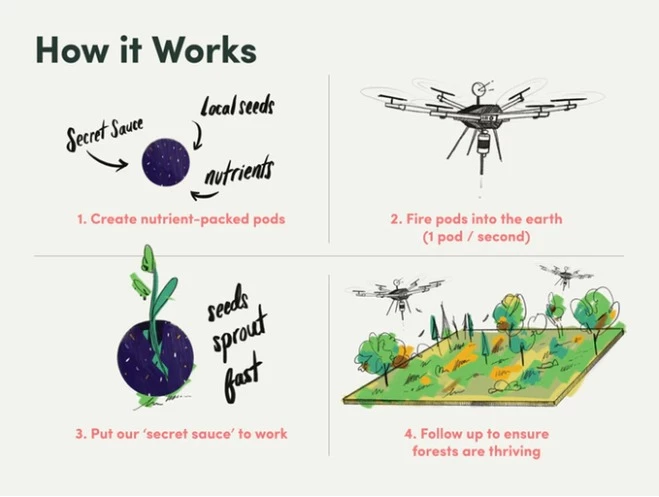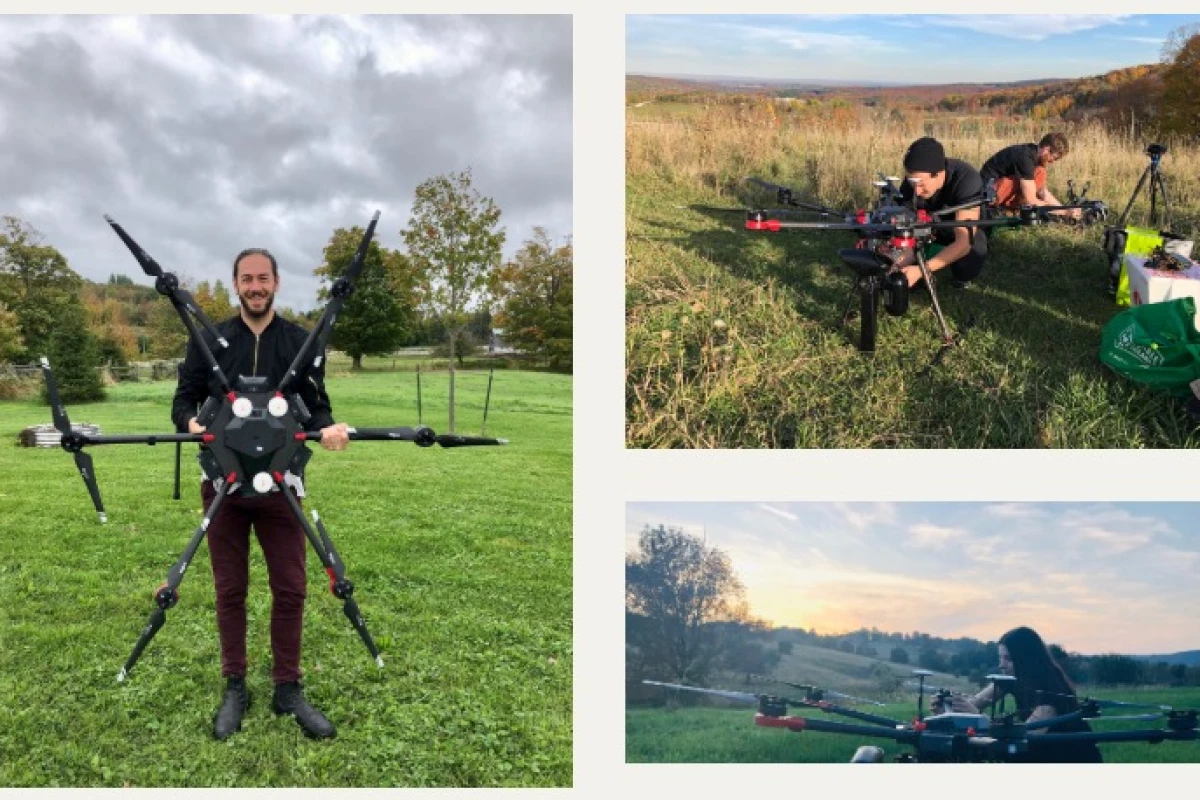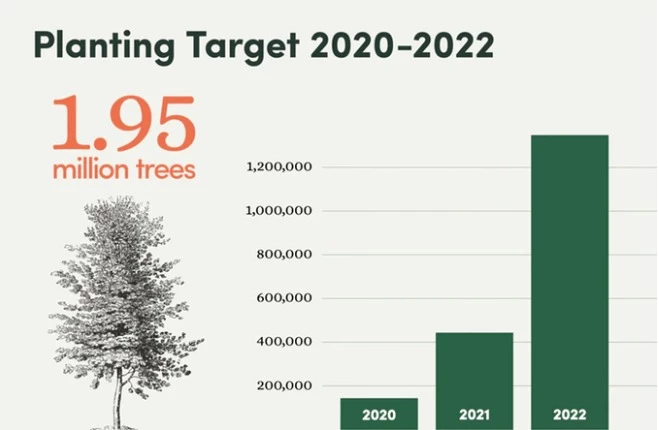We looked at the concept of forest regeneration using drones back in 2016 with the Droneseed initiative, now a team of Canadian science and engineering graduates is pitching a dream to plant a billion trees by 2028 using drones. The project is dubbed Flash Forest and combines the use of drones with specially-designed pods and an accelerated seed germination process. According to Flash Forest, its technology can plant trees 10 times faster than a single worker and at a cost that is 80 percent cheaper than traditional tree planting methods.
“We are a Canadian drone reforestation company that modifies drones to fire rapidly-germinating tree seeds into the soil,” says Flash Forest. “We merge technology, software and ecological science to surpass traditional tree-planting efforts and rapidly accelerate global reforestation efforts. With our ambitious goal of planting 1 billion trees by 2028.”

Flash Forest incorporates the use of a heavy-lift drone that is equipped with a pneumatic firing device, allowing it to insert the planting pods into the soil at an ideal depth. Each custom-made tree pod contains a minimum of three pre-germinated seeds, mycorrhizae, fertilizers, and additional plant-loving ingredients (which the team is keeping secret).
The seeds are already sprouted before they’re inserted into the ground, promising a more successful growth pattern and robust rooting system. Following the planting, the team will follow-up the process with a spraying drone to provide nitrogen and other nutrients to the seedlings. Furthermore, an additional mapping drone is used to keep an eye on the process of the plants' growth. The team hopes to plant eight different species to generate healthy ecosystems, while also planting enough trees to offset North American carbon emissions.

“We started Flash Forest with the goal of offsetting carbon emissions enough to have a significant and measurable impact on climate change within the next decade,” says Flash Forest. “We work closely with botanists and forestry experts, and use multi-spectral mapping UAV technology to select ideal planting sites and provide valuable follow up data on ecosystem health.”
The Flash Forest pods use less water than traditional planting methods and can be created in mass quantities within just 30 days. This allows the team to plant trees much faster and at a huge economical savings, compared to the use of seedlings that often require 12 to 24 months in a nursery before they can be planted successfully.
“This year we planted eight deciduous and coniferous species local to Southern Ontario,” says Flash Forest. “We can easily fill our pods with seeds of virtually any tree species (except for acorns and a few of the larger exceptions). If interested, we can also plant any flora that’s appropriate for an ecosystem in its successional period.”

Flash Forest is currently hoping to raise CAD 50,000 (about US$37,979) via the Kickstarter platform. The team requires additional funding to purchase equipment to boost its production capabilities so that they can create “millions of seed pods.”
“The Flash Forest Reforestation is an extremely nuanced field and in order for us to bring this technology across international borders we need funding.. and we need it quick,” says Flash Forest. "We have an immediate need to purchase equipment that will allow us to produce millions of seed pods. By sponsoring our company, you help us take our technology to the Pacific Forests of Canada, the Amazon Rainforests of Brazil and, ultimately, the globe.”
Those interested in providing financial assistance to the Flash Forest project can pledge their support via its Kickstarter campaign, which will close towards the end of January 2020.
Source: Flash Forest












